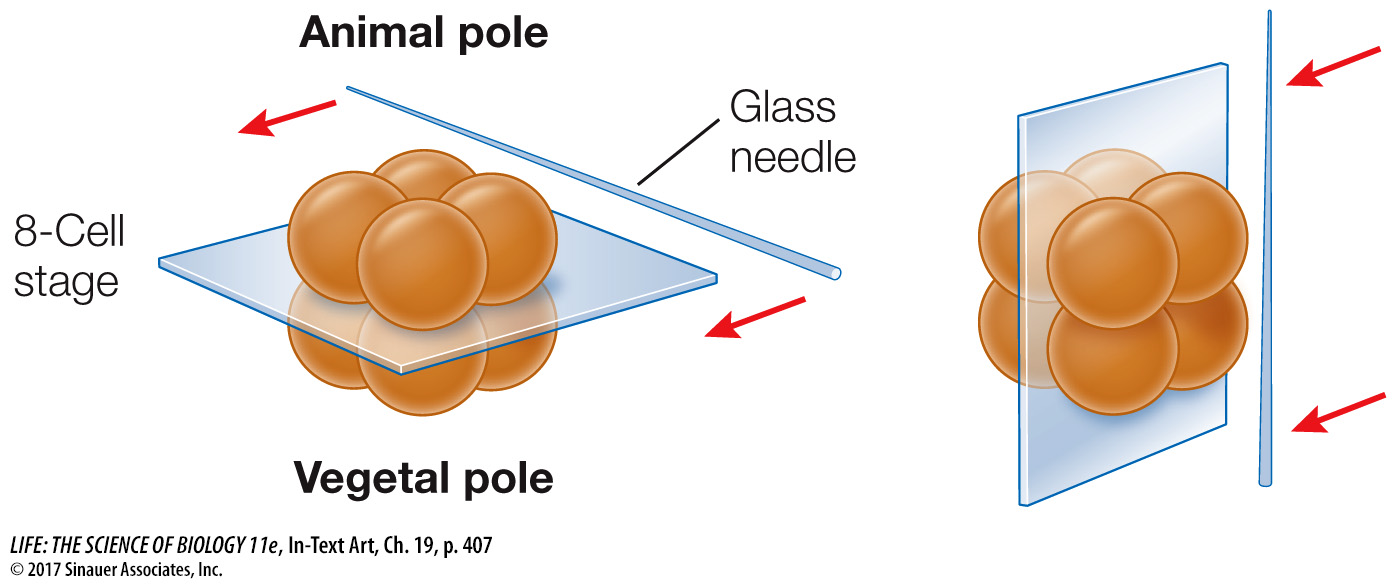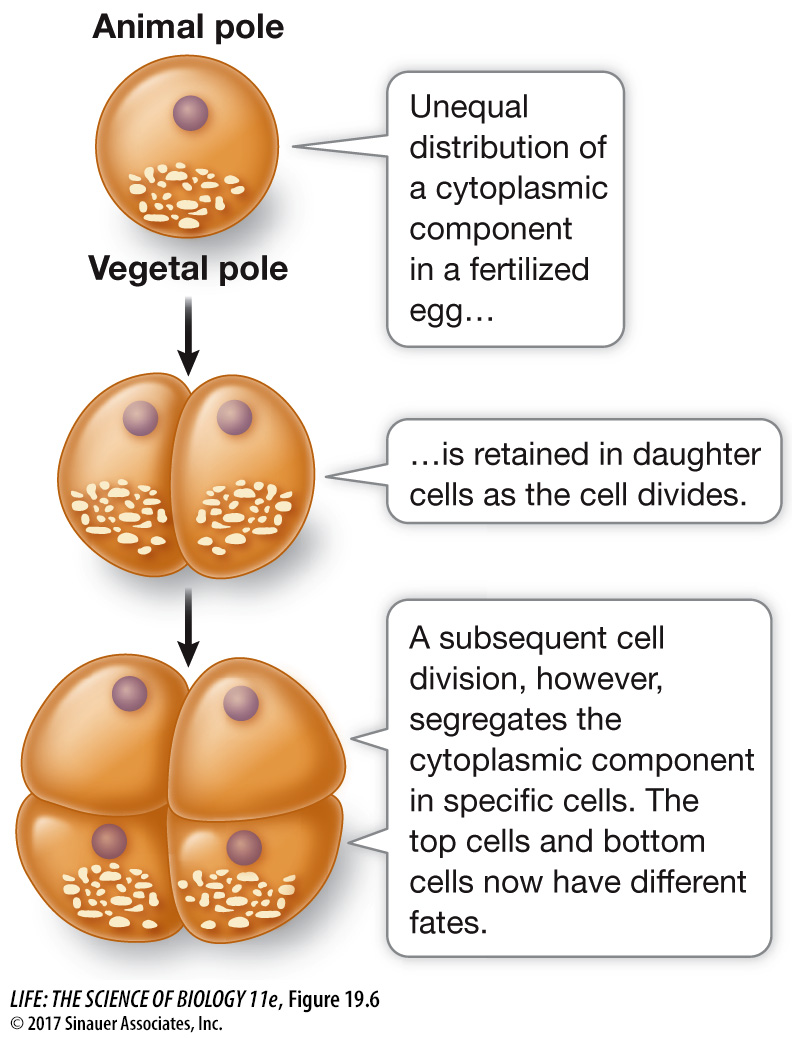Cytoplasmic segregation can determine cell fate
Some differences in gene expression patterns and determination of a cell’s fate happen as a result of cytoplasmic differences among cells. One such cytoplasmic difference is the emergence of distinct “top” and “bottom” ends of an organism or structure; a difference that establishes polarity. Many examples of polarity are observed as development proceeds. An axis of polarity is established by our heads and “tails,” as well as between the distal (far) ends of our arms and legs (wrists, ankles, fingers, toes) and their proximal (near) ends (shoulders and hips).
Polarity may develop early; even within the fertilized egg, the yolk and other factors are often distributed asymmetrically. During *early development in animals, polarity is specified by what is called the animal pole at the top of the zygote and the vegetal pole at the bottom. This polarity can lead to determination of cell fates at a very early stage of development. For example, sea urchin embryos can be bisected at the eight-

*connect the concepts The processes of early development in animals, including the influences of cytoplasmic determinants on cell fates and the ways in which the yolk and other factors are distributed in early sequences of cell division (i.e., in patterns of cleavage), are further considered in Key Concepts 43.1 and 43.2.
If the two halves of these embryos (each with four cells) are allowed to develop, the results are dramatically different for the two different cuts:
If the embryo is cut into a top half and a bottom half (left, above), the bottom half develops into a small sea urchin and the top half does not develop at all but instead gives rise to a hollow ball of undifferentiated cells.
If the embryo is cut into two side halves (right, above), both halves develop into small sea urchins.
These results indicate that the top and bottom halves of an eight-

Animation 19.2 Early Asymmetry in the Embryo